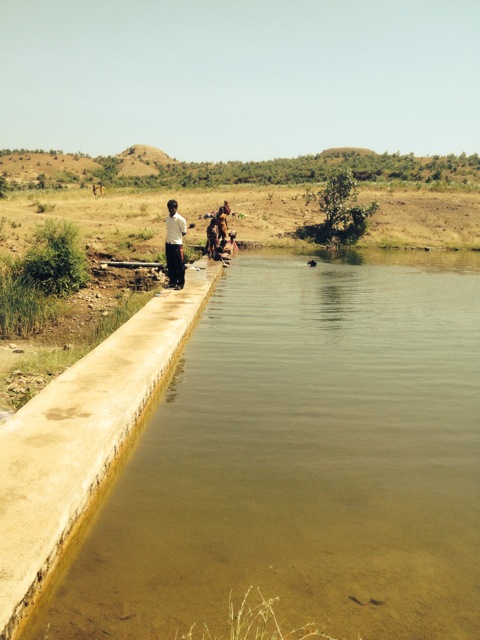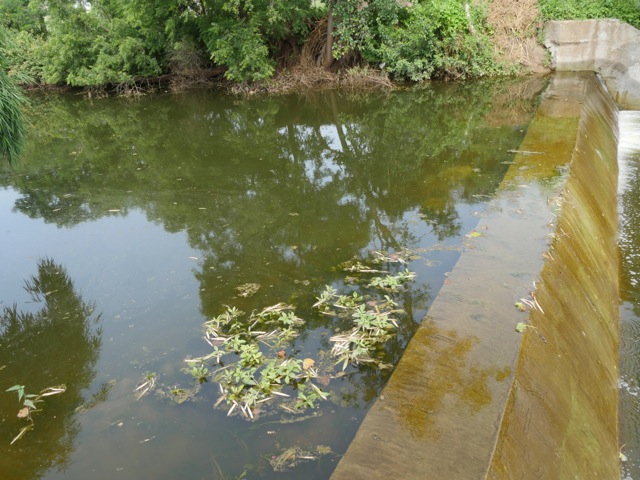When you are deeply involved in a project – there is a tendency to forget that some people may not have any understanding of the work you are doing.
Someone asked me with great question in their voice, a few days ago, “What is a check dam?” and I realised that a more detailed explanation is needed to help people understand just what it is that we are doing.
So here it is Check Dams 101.

Check dams are usually fairly small – can be temporary (such as those made with sand bags) or a more permanent concrete and rock construction. They are built across streams and channels to slow the water flow – designed to create a small dam behind the wall – where water will collect with a result that instead of fast run off, water will filter down into the underlying aquifers.
Done in a careful way in good positions, these small dams can make a considerable difference to the water table. They can affect the level of water in wells up to two kilometers away. And sometimes the stream which customarily dries up in the dry season, will become perennial and surrounding or nearby springs regenerate.
These methods although now using modern materials are old traditional ways of water harvesting.
There are different styles of dams, the Dilasa Foundation with long experience in water harvesting – have developed a very interesting and effective method called the Doh System which consists of digging out the area behind the dam wall construction with a slope leading up to the dam wall. This means that when the water rushes through, instead of hitting the dam wall and dropping all its silt, the force of the water is directed up the slope and over the wall… taking the silt with it. These type of dams need much less maintenance than those made in a more traditional way.

Beside creating check dams – there are many aspects to water harvesting and conservation. These include bore well recharge systems such as done by Sikandar Meeranayak, the CEO of SKRDP where existing tube wells, or bore wells are flooded with water in the rainy season and are used as pathways to the underground aquifers to recharge those ‘tanks’ under the earth.
Other apects to be considered may be trenches .. built up earth across the line of the water flow on hills to encourage water to seep into the ground, as well as discouraging the traditional practice of burning the hillsides, so that natural vegetation is retained and the water does not flow off rapidly but seeps down through the root systems.
So I trust that this will give you a clearer picture of what a check dam is and what this is intended to accomplish for rain water harvesting.
If you would like to support our work, we have an active crowdfunding campaign running at this time, see here for how to join us – or perhaps if you are located in India you can make a direct contribution to our work through this bank account –
Bank of India, Branch JM Rd PUNE,
a/c Naisargik Shikshan Sanstha
Acct No: 0518 1021 000 000 2
IFSC: BKID0000518
Please mark your contribution clearly as Water Harvest – Strong Village Project.

